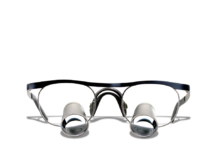
The use of ‘bulk fill’ composites has been increasing over the years. In my opinion, the main driving force has been to reduce the layers that need to be placed in deeper cavities with the sometimes tedious repetitive light-curing required. There is also the risk of incorporation of voids or contamination between the layers. Some of the bulk fill materials need to be covered with a conventional composite for reasons of strength or aesthetics.
Most of the light-cured bulk fill composites claim to have a cure depth of a maximum of 4-5mm. My main concern with this is that there is no way for the clinician to accurately measure this limit. In addition, undercut areas may extend beyond this distance and some of the composite may not be directly in the light path. It may also be sensitive to user technique. This, coupled with the knowledge that a significant number of curing lights in use do not reach recommended output values, can result in material not fully curing. Also, some cavities, especially when creating cores or fillings that extend into access cavities, are much deeper than 4-5 mm and will require layering in any case.
All composites shrink and generally this shrinkage is towards the light with the possibility of gap formation at the base.
These issues have been addressed by a new bulk fill composite, BulkEZ. Being self-cure it has unlimited cure depth and does not suffer from the disadvantages of light-cured materials. BulkEZ shrinks towards the tooth so marginal leakage does not occur. Indeed, BulkEZ must not be light-cured during the setting process.
Most bulk fill composites have a flowable consistency so that placement adaptation is generally good. They usually need to be covered by a conventional composite and are normally only suitable as a stand-alone restorative material in non-occlusal-contact applications.
A bulk fill that does not need to be covered requires the use of a special vibrating handpiece for placement which is expensive and requires sterilisation between patients. BulkEZ can be used with or without a conventional composite covering. It’s aesthetics for molar teeth is good (available in A1, A2 and A3) with toothlike opacity as it does not need to be translucent for maximum light transmission and its polishability is excellent.
The speed of BulkEZ setting (only 90 seconds) really comes into its own when filling more than 1 cavity at the same time. There is no need to light-cure the layers in one filling and then go on to the next. Savings in chair time in this situation can be in the order of 5-10 minutes. The only light-curing required for BulkEZ is a short 10 second cure (after full self-cure has completed) if the air inhibited layer on the surface is not going to be removed by adjustment of the filling.
BulkEZ is compatible with most conventional bonding agents. In very deep cavities it may be difficult to ensure the complete setting of light-cured bonding agents. In the case of Prelude ONE, BulkEZ will complete the setting if not fully cured. It is very radiopaque.
Supplied in 6G automix syringes with nozzles which have an extended bendable metal tip, BulkEZ is easily applied and flows readily into the cavity. It can be contoured during the setting process – see the technique videos on bulkez.co.uk.
In summary, BulkEZ is a material that overcomes the inherent problems of posterior fillings. It is not technique sensitive and is quick and easy to apply. Time saving, especially with multiple fillings, is significant.
For more information and to view instructional videos, research articles and technical information visit bulkez.co.uk, call Freephone 0808 1000 888 or email sales@evident.co.uk.
Author biog
Stephen Selwyn is Managing Director of Evident and in private practice in central London. Evident has successfully brought many innovative products to the profession.





